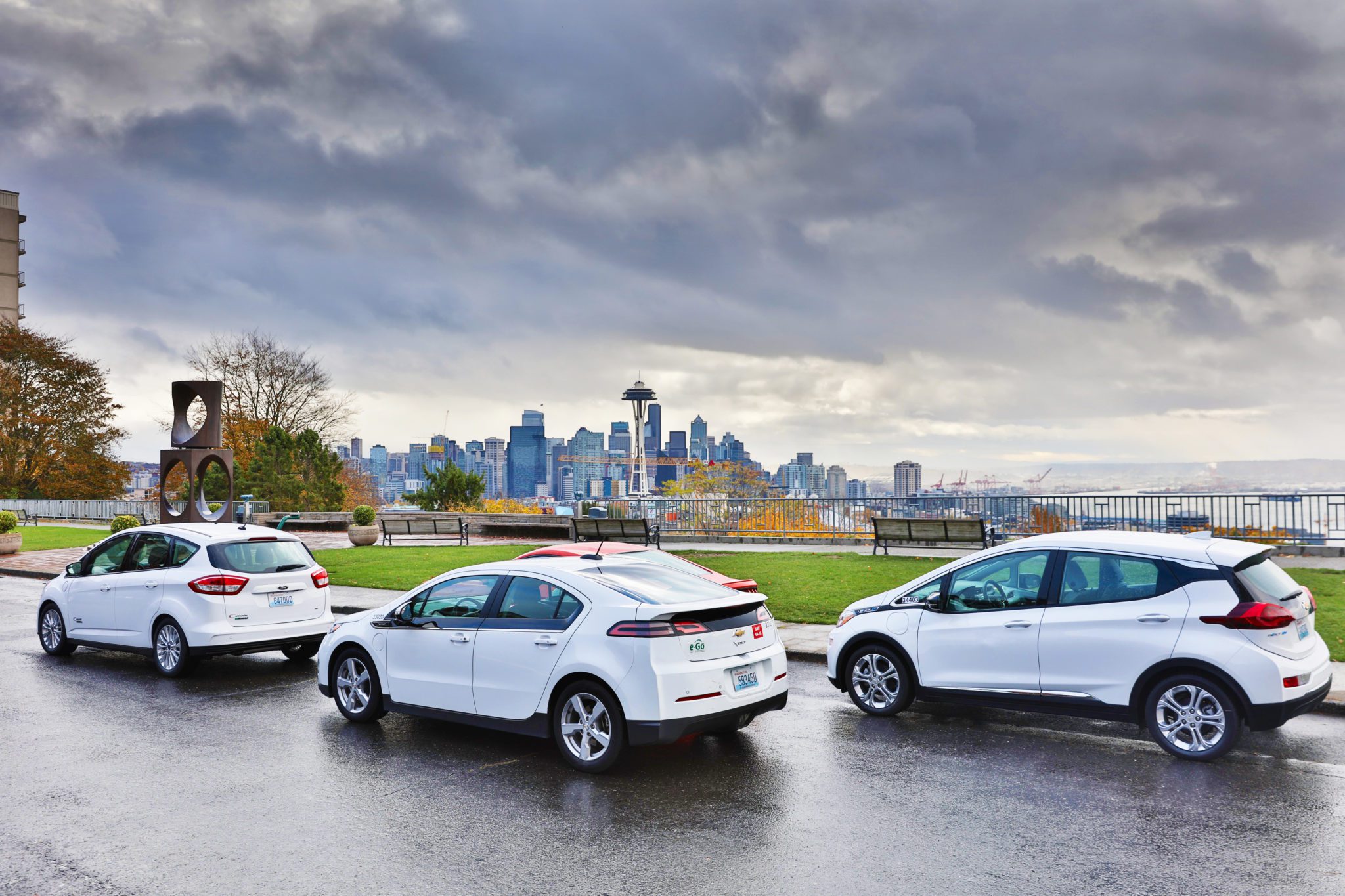
As Seattle City Light customers start to use electric vehicles and electric building technologies, City Light is upgrading our power grid to support growing electricity use and make our services more resilient, reliable, and affordable. Improving the power grid protects communities by minimizing disruptions and outages from severe weather, climate change, and natural disasters. This effort takes a comprehensive team working together diligently over decades to deploy innovative solutions and respond to the complex challenges ahead while continuing to empower the communities we serve.
Why does Seattle City Light need to make improvements to the current electrical system?
Customer demand is changing what the electric grid needs to do. This is a key reason why the grid needs to adapt. City Light residential and commercial customers are adding new electrical loads like electric cars, electric buses, and electric ferries. Customers are moving away from natural gas for heating and cooking. Customers are adding new renewable resources such as rooftop solar. The grid of tomorrow is different than the grid of yesterday. We use the term Grid Modernization to describe the small and large changes needed to make the transition.
What is grid modernization?
Grid modernization is an effort by utilities to implement new technologies and processes to create the grid of the future. The Department of Energy states that “the grid of the future will deliver resilient, reliable, flexible, secure, sustainable, and affordable electricity.”
How will the grid support future electrification?
City Light has developed a Grid Modernization Plan and Roadmap to enable increased customer electrification and improve grid resiliency and security. This plan charts a path forward for City Light and our customers. It describes specific projects and tasks for the next two years, and lays the foundation for five-year and ten-year goals, with projects spanning across planning, operations, supporting technologies, and physical infrastructure upgrades.
With more electric vehicles and electrified transportation coming online, can the grid continue to support customer demand?
Yes. This requires careful and continuous planning. City Light recently conducted an electrification assessment that looked at a variety of electrification scenarios to determine how they would impact the utility’s grid. The study outlines how much energy will be needed for the electrification of transportation, buildings, and commercial and industrial applications, as well as what capacity is available on the existing distribution grid.
What is City Light doing to prepare?
The electrification of space heating, space cooling, and water heating will cause significant increases in load over the next 20 years. To prepare for electrification, the utility is:
- implementing the Grid Modernization Plan and Roadmap, which includes improvements to make the grid more automated, flexible, reliable, and resilient, as well as conducting customer-facing demand response pilot programs.
- assessing the grid capability to meet the challenges of new technologies such as electric vehicles and solar generation.
- continuing to invest in energy efficiency as a valuable resource for both the utility and customers.
- partnering with customers, public agencies, and institutions to secure external funding for a portfolio of electrification-enabling solutions.
What partnerships is City Light exploring?
Not only must the grid meet the needs of existing City Light customers, but it also needs to be ready for enablement of electrification, to support near-term and long-term growth. City Light is making strategic investments, including partnerships and pilot programs with public transit agencies such as King County Metro, Washington State Ferries, and the Port of Seattle, to support transportation electrification efforts.
What resources will City Light use to supply power?
City Light continues to invest in new technologies and approaches to energy conservation, energy storage, and other solutions to meet customer energy needs. City Light’s 20-year Integrated Resource Plan (IRP) outlines the utility’s long-term strategy to supply reliable electricity to customers at a reasonable cost, while protecting the environment and ensuring service equity. The IRP includes new renewables (e.g., solar and wind), energy efficiency programs, and load shifting strategies to meet future increases in electricity demand. Hydropower is City Light’s primary energy source, providing 86% of the electricity for the utility. Hydroelectric projects provide affordable, low-carbon power and the flexibility to meet load when it is needed (not just when the sun is shining or the wind is blowing). Hydroelectric projects can mitigate the impacts of climate change, manage flood risks, and fund fish and wildlife recovery and restoration programs.
Why does grid modernization matter?
Changing customer expectations, regulatory and policy initiatives, an increasing number of extreme weather events, the need to accommodate and integrate distributed energy resources (DER), and advanced technologies are driving changes to the way utilities plan and operate the grid. As a result, many utilities are developing comprehensive plans that lay out strategies for grid modernization over a multi-year time frame. Developing a strategy for grid modernization is complicated. Investments are significant and must be sequenced over several years to achieve both the foundational requirement of safely delivering low-cost, reliable electricity while also adding new capabilities.